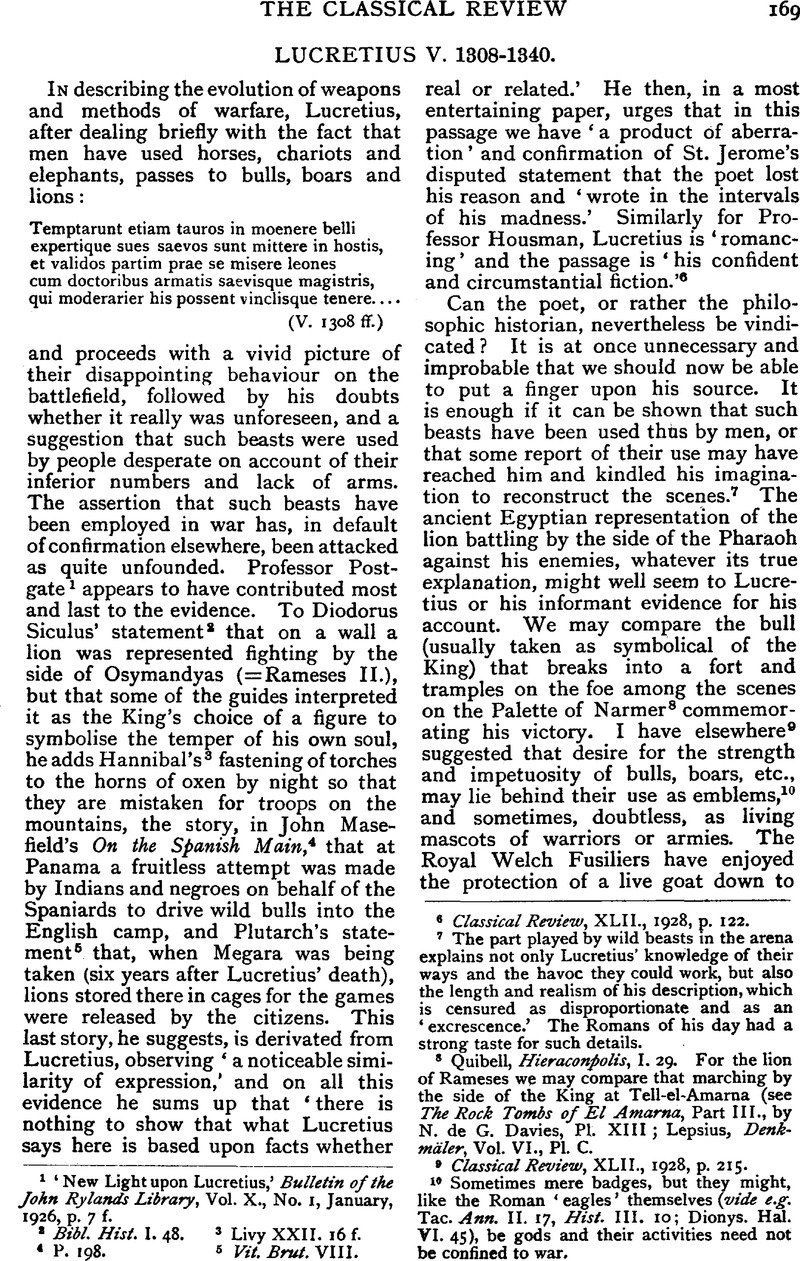No CrossRef data available.
Article contents
Lucretius V. 1308–1340
Published online by Cambridge University Press: 27 October 2009
Abstract

- Type
- Review Article
- Information
- Copyright
- Copyright © The Classical Association 1930
References
page 169 note 1 ‘New Light upon Lucretius,’ Bulletin of John Rylands Library, Vol. X., No. 5, January, 1926, p. 7 f.Google Scholar
page 169 note 2 Bibl. Hist. I. 48.
page 169 note 3 Livy XXII. 16 f.
page 169 note 4 P. 198.
page 169 note 5 Vit. Brut. VIII.
page 169 note 6 Classical Review, XLII., 1928, p. 122.Google Scholar
page 169 note 7 The part played by wild beasts in the arena explains not only Lucretius' knowledge of their ways and the havoc they could work, but also the length and realism of his description, which is censured as disproportionate and as an ‘excrescence.’ The Romans of his day had a strong taste for such details.
page 169 note 8 Quibell, Hieraconpolis, I. 29. For the lion of Rameses we may compare that marching by the side of the King at Tell-el-Amarna (see The Rock Tombs of El Amarna, Part III., by N. de G. Davies, P1. XIII ; Lepsius, Denkmäler, Vol. VI., P1. C.
page 169 note 9 Classical Review, XLII., 1928, p. 215.Google Scholar
page 169 note 10 Sometimes mere badges, but they might, like the Roman ‘eagles’ themselves (vide e.g. Tac. Ann. II. 17, Hist. III. 10; Dionys. Hal. VI. 45), be gods and their activities need not be confined to war.
page 170 note 1 Edited with a French translation by Sjoestedt, M. L. in Revue Celtique, XLIII., 1926, p. 1 ff. See especially § 48 ff. and § 96 ff., cf. § 21.Google Scholar
page 170 note 2 They are supposed to be transformed druidesses.
page 170 note 3 Ibid., § 118.
page 170 note 4 § 15. This is, of course, not the same as launching them against the foe by natural means. The boar was emblem of several Roman legions (i.e., I. Italica, II. Adiutrix, X. Frietensis, XX. Valeria Victrix), and its names suggest that its virtues were sought by the caput porcinum formation, which continued late in use in the west (see Vegetius, De Re Militari, III. 19), and the ‘boar’ formation advised by the ‘Laws of Manu’ (VII. 187).
page 170 note 5 See Dunn's translation, p. 94 (from the Leabhar na h- Uidhre and The Yellow Book of Lecan, 11. 867–887).
page 170 note 6 Translated from the Flemish. For the passage see p. 400.




